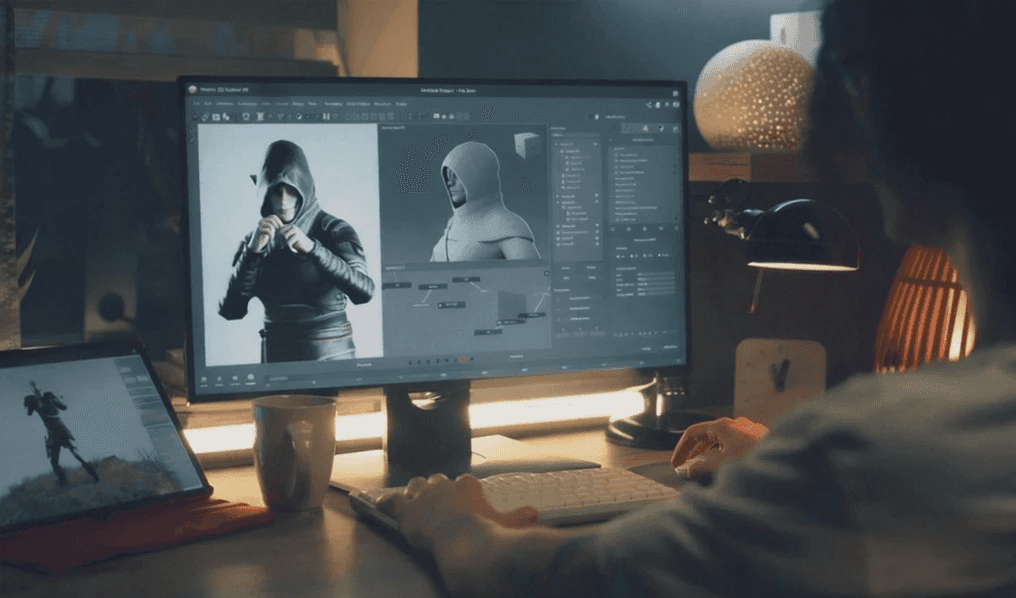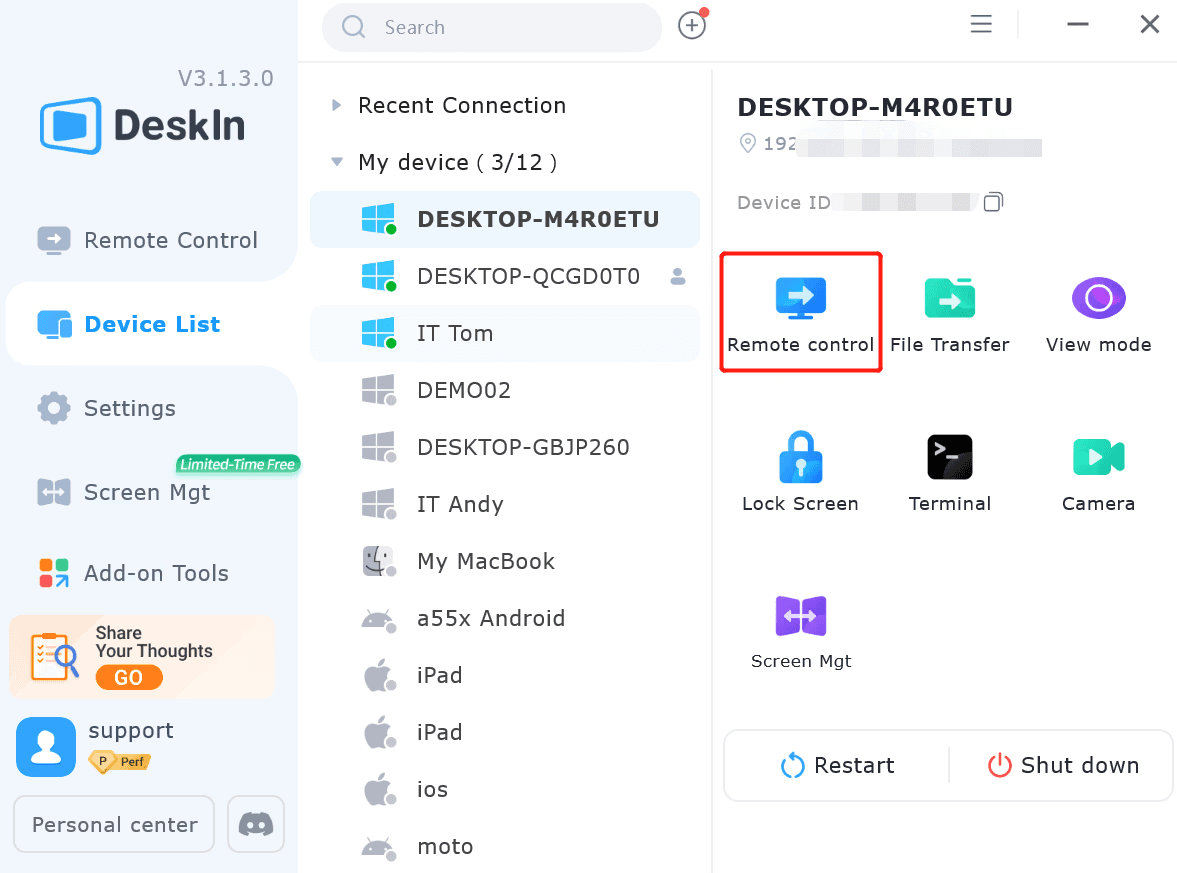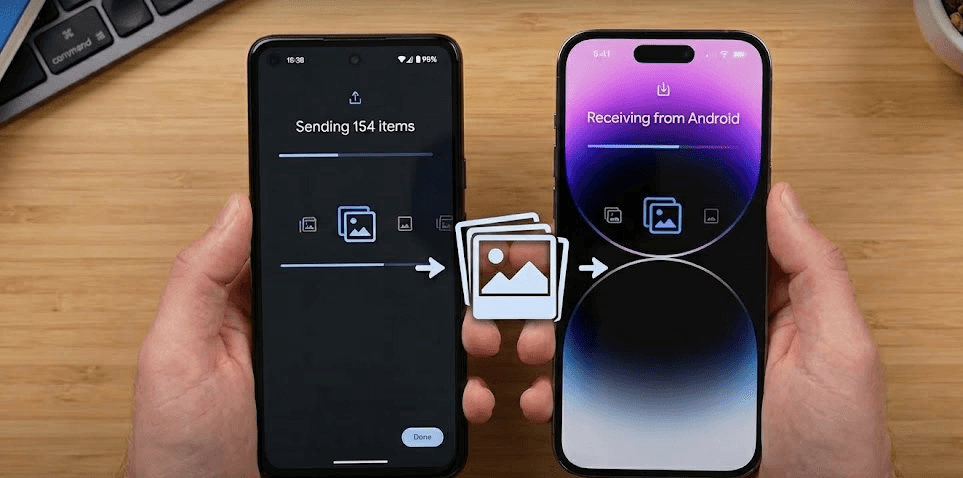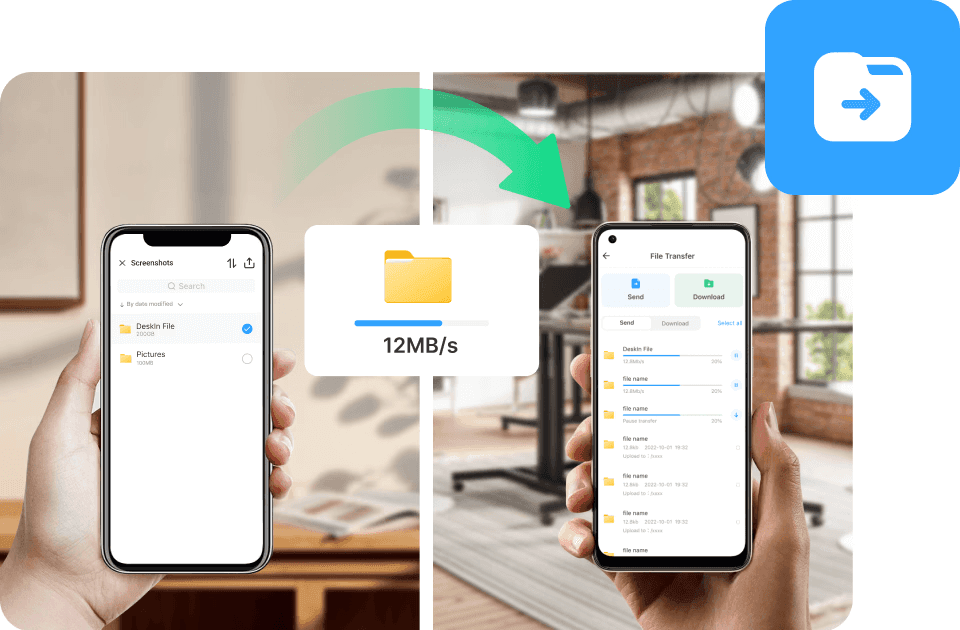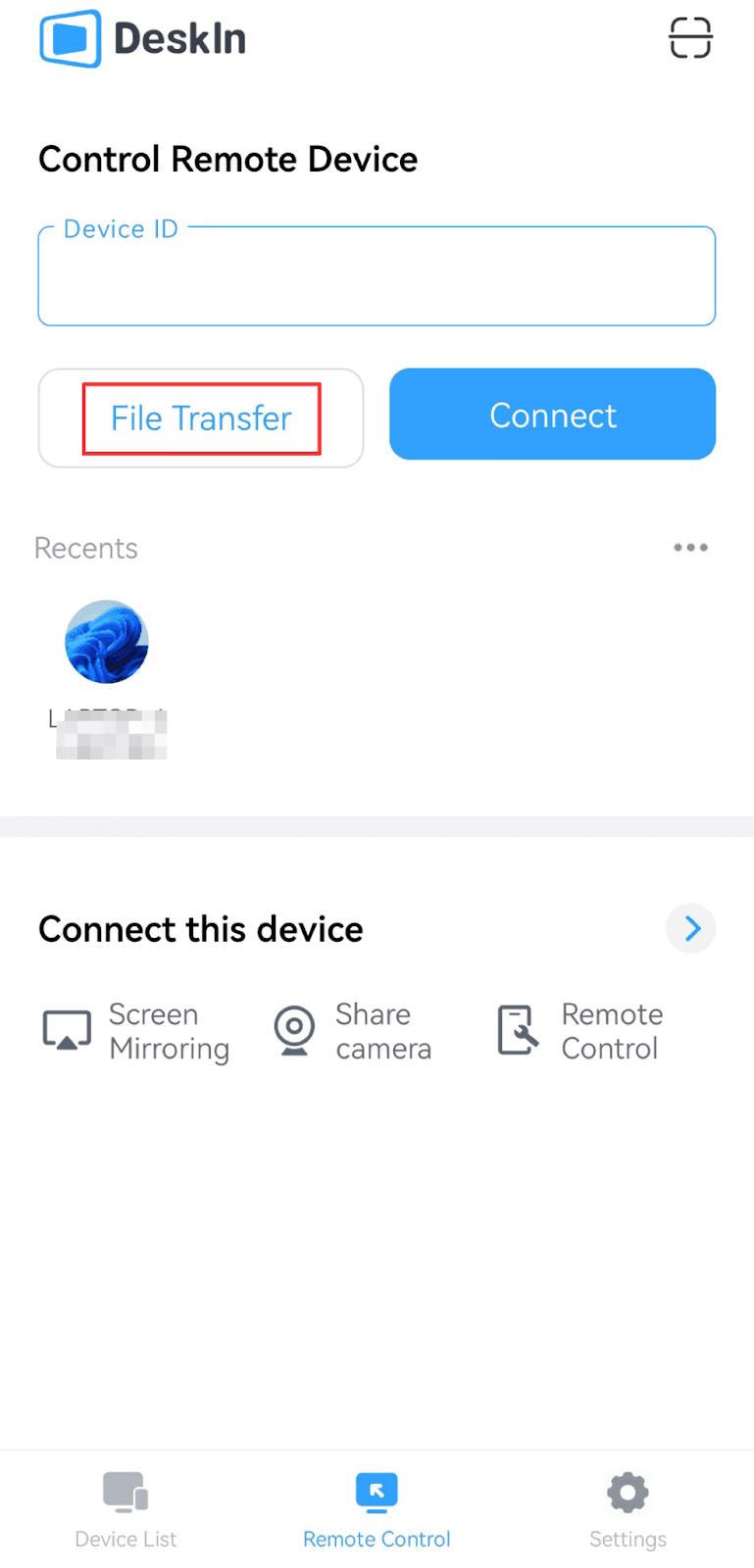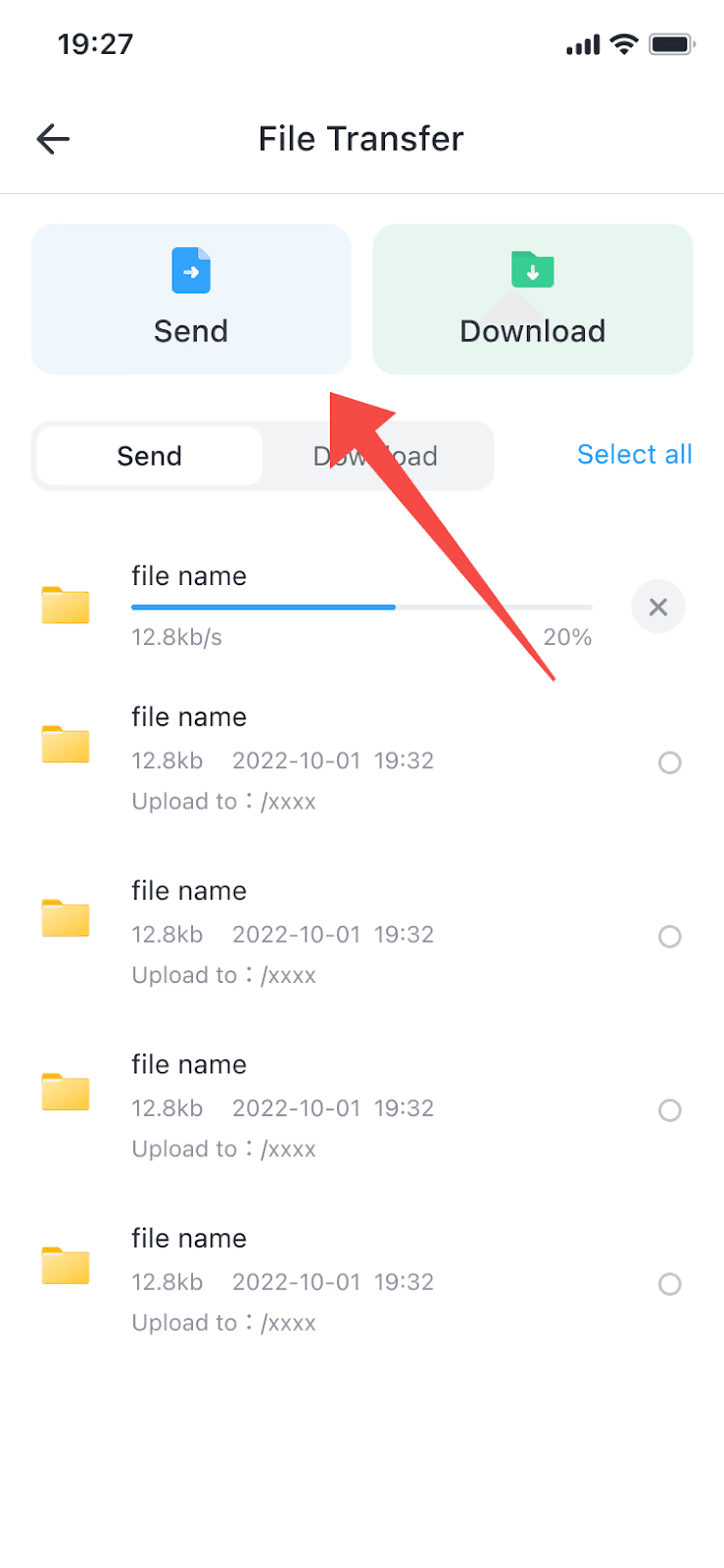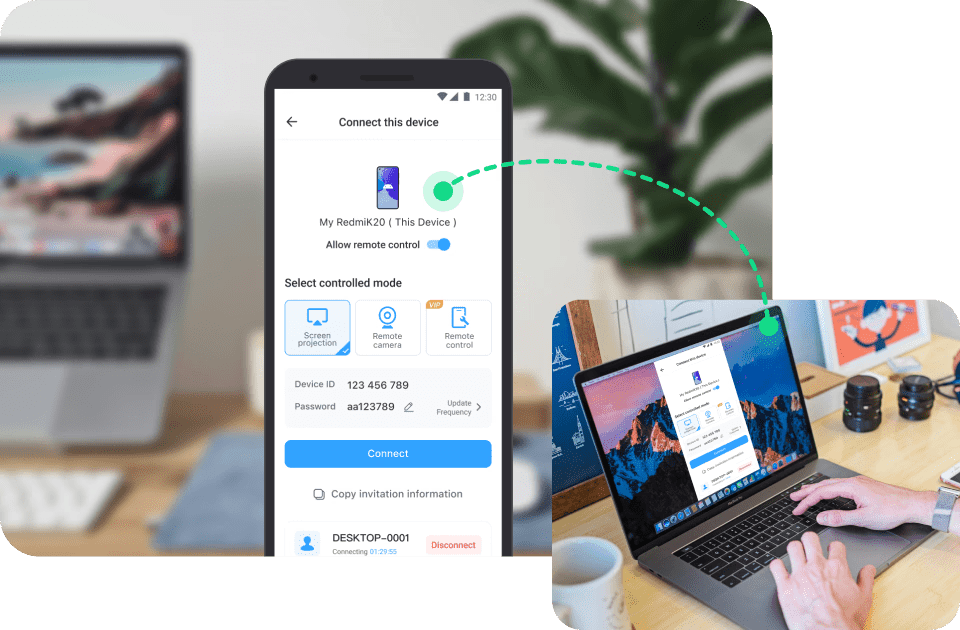無論你是穿梭於各地咖啡廳的數位遊牧族、上課時需要存取設計軟體的大學生,還是在家遠端排除辦公室電腦故障的上班族,一款穩定可靠的 iPhone 遠端控制 App,絕對是提升工作效率的救星。讓你即使不在電腦前,也能隨時隨地処理重要任務,輕鬆存取電腦檔案、進行遠端工作。
但現實情況是:不是每款遠端桌面 App 都表現優異。有些在播放影片時會延遲,有些限制檔案傳輸,甚至將關鍵功能藏在付費牆後。為了幫助你找到在效能與價格之間取得平衡的最佳解決方案,我們實測並精選出 6 款目前最值得推薦的 iOS 遠端控制應用程式,包含免費與付費選項,從穩定性、速度與易用性三大面向進行完整評比。
了解更多關於 iPhone 遠端控制的資訊:
如何挑選適合的 iPhone 遠端控制 App?
在進入我們的精選推薦之前,先了解一款 iPhone 遠端桌面 App 是否真正可靠,會幫助你做出正確選擇。無論你只是想偶爾使用、處理商務需求,甚至是進行遠端遊戲操作,以下幾個關鍵指標,都是選擇時不可忽略的重要參考:
跨平台相容性:若你同時在 macOS 和 Windows 系統上工作,請選擇支援這兩種作業系統的 App。最優秀的 iPhone 遠端桌面應用程式,應具備不受平台限制的靈活存取能力,讓你無論使用 Mac 或 Windows 電腦,都能順暢連線。
連線穩定性與效能:請尋找具備低延遲、高畫面更新率與穩定連線品質的遠端控制 App。即使在行動網路或公共 Wi-Fi 下也能流暢操作,對經常出差、旅行途中也需遠端操控桌機的使用者來說,這點尤其關鍵。
使用便利性:介面應該直覺且符合行動裝置操作習慣。你不應該還需要看操作手冊,才能讓 iPhone 順利連接到電腦,這樣才能真正提升使用體驗。
安全性與隱私保護:請優先考慮具備強大加密技術、多重驗證(2FA),以及隱私功能(如畫面遮罩或連線逾時自動登出)的 iOS 遠端控制 App,特別是當你要遠端存取敏感資料或公司系統時。
檔案傳輸與控制功能:一款好的遠端控制應用程式不該只是「螢幕鏡像」功能。它還應該支援跨裝置檔案傳輸、支援多種操控模式(觸屏模式和指針模式)、甚至連接遊戲手把或其他外部裝置等進階功能。
價格與授權彈性:部分 App 提供免費版功能,另一些則需訂閱才能完整使用。請評估你是需要一個免費的 iPhone 遠端桌面工具,還是更傾向使用效能更強、設備授權更多的高階版本。
Top 1. DeskIn(整體最佳首選!)
如果你正在尋找最優秀的 iPhone 遠端桌面控制 App,那麼 DeskIn 絕對是榜首不二選擇。無論你是創作者、專業人士,還是遠端工作者,DeskIn 都能提供高速、超穩定的遠端存取體驗,讓你輕鬆從 iPhone 操控 Windows 電腦,或遠端投影 iPhone 到你的 Mac 上。無論是編輯設計檔案,還是存取商務文檔,DeskIn 都能帶來極致流暢的操作感受。
DeskIn 最令人驚豔的,是它在強大效能與超高性價比之間取得了完美平衡。與許多將進階功能鎖在付費牆後的 App 不同,DeskIn 的免費版本就支援最多 3 台裝置並可商業使用。其經過最佳化的全球架構,建構於 200 多個中繼節點上,即使在行動熱點或飛機 Wi-Fi 等弱網路環境下,也能確保低延遲、不限時、不中斷的連線品質。對重視穩定性、效能與跨平台支援的 iPhone 使用者來說,DeskIn 絕對是首選遠端工具。
憑藉這些強大特色,DeskIn 遠端桌面也被公認為目前市面上最好的免費遠端桌面軟體之一。以下是簡易的使用教學,幫助你快速上手。
提示:DeskIn 支援 iOS 12.0 及以上版本,相容於 iPhone 6s 之後的所有機型,包括最新的 iPhone 17 系列。無論你使用較舊的 iPhone 機型還是最新款,都能輕鬆使用。

第一步:下載 DeskIn iPhone 遠端桌面
點擊下方的按鈕,前往 DeskIn Personal 下載頁,分別在你的桌面電腦(Windows 或 Mac)與 iPhone 上安裝 DeskIn 應用程式。整個下載安裝過程只需 5 分鐘,無需複雜設定。

第二步:登入並綁定裝置
建立 DeskIn 帳號,並分別在 iPhone 與電腦上登入。系統會透過電子郵件驗證新裝置,以強化帳號安全。這個步驟確保了你的連線完全私密且安全。
第三步:開始遠端連線
在 iPhone 上開啟 DeskIn App,輸入目標電腦的裝置 ID 與密碼,即可一鍵開始遠端控制會話,立即遠端操作電腦,連線通常在 2 秒內建立。

接下來,你就可以充分利用 DeskIn 提供的進階功能,例如跨平台檔案傳輸、啟用虛擬螢幕、iPhone自訂電腦遊戲組合按鈕,或以完整 4:4:4 色彩支援與遊戲手把操作遠端存取設計工具等功能。
優點:
操作介面設計簡潔易上手,即使是普通小白也能快速上手
高效能遠端控制,支援 4K 60FPS/2K 144FPS 畫面傳輸
即使在弱網路環境下,依然保持連線順暢穩定
免費版本支援最多 3 台裝置與商業用途
完整跨平台相容性:Windows、macOS、iOS、Android
進階功能齊全:檔案傳輸、螢幕鏡像、隱私遮罩、虛擬顯示器、遠端攝影機、遠端喚醒電腦、遠端列印等
缺點:
若需控制 超過 100 台裝置,需升級為付費方案。
Top 2. Windows App Mobile(微軟官方應用)
由 Microsoft 推出的 Windows App Mobile 是一款可靠的 iPhone 遠端控制應用程式,專為存取 Windows 桌面與虛擬環境(如 Azure 虛擬桌面、Windows 365、Microsoft Dev Box)而設計。此工具特別適合身處 Microsoft 生態系統的使用者,提供簡潔的操作介面、安全的加密連線,以及基本的遠端功能,如螢幕控制、鍵盤輸入與檔案重新導向。
儘管它穩定且實用,但主要針對企業環境開發,不支援非 Windows 裝置,亦缺乏個人用途上的彈性。此外,該應用僅支援遠端連線至 Windows 系統,並且需使用公司或學校的 Microsoft 帳號,不支援個人帳號。對於一般用戶來說,它缺少如 macOS、Android 或 iOS 控制、手機對手機控制、遊戲相關功能等彈性遠端桌面操作選項。
提示:
Windows App Mobile 支援 iOS 14.0 及以上版本,相容於 iPhone XS 之後的機型。
自 2025 年 5 月 27 日起,Microsoft Store 內的「遠端桌面」應用程式將終止支援並下架,用户需改用「Windows 應用程式」來進行遠端連接。

優點:
對 Azure 虛擬桌面、Windows 365 與 RDS 有最佳化支援
支援多螢幕與顯示比例縮放
可重新導向周邊設備,包括音訊、網路攝影機、USB 隨身碟等
遠端會議中提升 Microsoft Teams 表現
缺點:
僅支援控制 Windows 裝置:無法遠端控制 Mac、手機或其他行動裝置。
帳號限制多:需使用公司/學校 Microsoft 帳號登入,不支援一般個人帳號。
連線速度與穩定性差:需透過 VPN 才能連線,速度慢且容易中斷。
畫質與延遲表現一般:最高僅支援 1080p30FPS,延遲偏高,操作不即時。
功能受限:缺乏延伸螢幕、鏡像投影、遊戲模式、語音通話與白板標註等進階功能。
安裝與設定複雜:需配置 Azure 或 RDS 架構,對一般使用者較不友善。
Top 3. TeamViewer Remote Control(老牌遠端控制工具)
TeamViewer Remote Control 是一款歷史悠久、廣受好評的 iPhone 遠端控制應用程式,能讓使用者遠端存取與操控電腦或其他裝置。此工具特別適合 IT 支援、遠端工作,或協助親友處理電腦問題。
TeamViewer 支援跨平台連線,iPhone 使用者可遠端連接至 Windows、macOS、Linux,甚至 Android 裝置,靈活性相當高。它具備螢幕共享、檔案傳輸、即時聊天等功能,並支援「有人值守」與「無人值守」兩種遠端模式。安全性方面也毫不馬虎,提供端對端加密與雙重驗證(2FA),確保資料隱私與連線安全。
然而,TeamViewer 對個人創作者或日常應用來說,在進階功能方面略顯不足,且其訂閱價格相對較高,在成本效益上對一般用戶而言可能不太划算。想要低成本且有豐富功能的應用程式?推薦使用 DeskIn!
提示:TeamViewer 支援 iOS 13.0 及以上版本,相容於 iPhone XR 之後的主流機型。

優點:
完整的跨平台相容性(Windows、macOS、Linux、Android、iOS)
透過端對端加密提供安全的連線
支援檔案傳輸與即時聊天功能
個人使用可免費使用
缺點:
無法完全控制 iOS 裝置,僅支援螢幕共享
部分進階功能需付費訂閱,且對個人用戶而言價格相對較高
免費用戶可能會誤被標註為商業用途,導致會話受限
Top 4. AnyDesk Remote Desktop for iOS
AnyDesk Remote Desktop 是一款多功能的 iPhone 遠端控制應用程式,讓使用者可以遠端存取與操控電腦及其他裝置。它特別適合 IT 支援、遠端工作,或協助親友解決技術問題。此應用支援跨平台連接,iPhone 使用者可連接至 Windows、macOS、Linux,甚至 Android 裝置。
除了基本的螢幕共享、檔案傳輸、會話錄影和剪貼簿同步等功能,AnyDesk 也提供強大的安全措施,例如端對端加密與雙重驗證(2FA),保護您的遠端連接不被駭客入侵。
然而,AnyDesk 並不支援虛擬螢幕、色彩精確的遠端設計(4:4:4 真色)或高幀率遠端遊戲等進階功能,對於需要這些功能的專業使用者而言,可能會感到一些限制。想要這些功能的話,推薦使用 DeskIn。
提示:AnyDesk 支援 iOS 13.0 及以上版本,相容於 iPhone XR 及更新機型。

優點:
多平台相容,支援 Windows、macOS、Linux、Android
透過端對端加密提供安全的連線
支援檔案傳輸、會話錄影和剪貼簿同步
連線速度快,適合日常遠端支援任務
缺點:
畫質與延遲受限:最高僅支援 60FPS,延遲約 80–120ms,操作不夠即時流暢。
功能需付費解鎖:遠端啟動、隱私模式、SSO、自訂別名等進階功能皆需升級方案。
裝置數量受限:僅允許綁定 3 台裝置,對多設備使用者不便。
缺乏娛樂與專業應用支援:無遊戲模式、3D視角與繪圖優化功能,不適合遊戲或設計工作。
客服與支援有限:需額外付費才能獲得技術支援,對一般使用者較不友善。
Top 5. Splashtop Remote Desktop for iPhone
Splashtop Remote Desktop 是一款強大的 iPhone 遠端控制應用程式,旨在提供無縫的電腦存取體驗,無論您是在家中、辦公室或外出中。它支援跨平台連接,讓使用者可以直接從 iPhone 連接至 Windows、macOS 和 Linux 裝置。Splashtop 特別受個人與專業使用者的歡迎,並提供高品質的串流和安全的遠端存取功能。
除了基本的遠端控制功能外,Splashtop 還提供強大的安全性,採用AES-256 加密和多重認證,確保您在遠端工作時,資料保持安全。此應用還具有簡單的介面,無論是初學者還是經驗豐富的使用者,都能輕鬆上手。然而,和其他遠端控制應用一樣,Splashtop 在行動裝置間的控制和一些像是設計中色彩準確度的創意功能上存在一定限制。
提示:Splashtop 支援 iOS 12.2 及以上版本,相容於 iPhone 6s 之後的機型。

優點:
可以無縫連接 Windows、macOS 和 Linux 設備,並從 iPhone 控制
提供低延遲、高品質的串流,實現順暢的遠端存取
支援設備間輕鬆傳輸檔案
允許您從 iPhone 遠端列印
使用 AES-256 加密與多重認證保護您的資料
缺點:
功能受限於付費方案:延伸螢幕、鏡像投影、遠端開機、白板標註、語音通話等多項功能需升級付費才能使用。
裝置訪問數量有限:僅能遠端控制 2 台設備,不如 DeskIn 可支援高達 100 台。
網路受限:免費僅支援局域網使用。
檔案傳輸受限制:單次傳輸上限 64GB,對大型檔案或多檔傳輸效率較低。
虛擬螢幕彈性不足:僅支援 Windows 10 以上系統,且最多僅能建立兩個虛擬螢幕。
Top 6. AnyViewer Remote Desktop
AnyViewer Remote Desktop 是一款輕量級的 iPhone 遠端電腦控制 App,適合追求簡潔操作和經濟實惠的使用者。該應用提供基本的螢幕共享與遠端控制功能,適合進行簡單的技術支援或偶爾的遠端連線任務。AnyViewer 的介面設計力求簡單直覺,新手用戶也能快速上手。
然而,AnyViewer 在穩定性與功能齊全度方面存在一些限制。該應用的一個顯著缺點是星標功能(Favorite 功能)難以設定,輔助設置中也存在 bug。此外,iOS App 需要一直保持開啟才能進行遠端控制,這在實際使用中會造成電池消耗加快的問題。用戶在使用過程中偶爾會遇到終端連接中斷或螢幕閃屏的現象,影響使用體驗。
提示:AnyViewer 支援 iOS 11.0 及以上版本,相容於 iPhone 6 及更新機型。

優點:
介面簡潔,快速上手
提供免費基本功能
適合簡單的偶爾性遠端連線需求
缺點:
功能受限於平台:macOS 端不支援多項功能,如電腦鏡像、虛擬螢幕與白板標註,跨平台體驗不完整。
延遲與穩定性一般:連線偶有卡頓與延遲,操作流暢度不及 DeskIn。
傳輸效率較低:檔案傳輸速度僅約 500KB/s,且有大小與數量限制。
功能豐富度不足:不支援語音通話、白板標註、遊戲手把與繪圖板等進階應用。
部分功能需付費:如隱私螢幕與設備分組等進階功能需升級企業版才能使用。
比較表格:哪個 iPhone 遠端控制應用程式是最佳選擇?
功能與特性 | DeskIn | Windows App Mobile | TeamViewer | AnyDesk | Splashtop | AnyViewer |
平台相容性 | Windows、Mac、iOS、Android | 僅能控制 Windows 裝置,可從 Windows、Android 或 iOS 端操作 | Windows、macOS、Linux、Android、iOS | Windows、macOS、Linux、Android | Windows、macOS、Linux、iOS、Android | Windows、macOS、Linux、iOS、Android |
安全性 | AES-256 加密,2FA | 加密連接,企業認證 | 端對端加密,2FA | 端對端加密,2FA | AES-256 加密,2FA | ECC-256 加密,無端對端與 2FA |
手機對手機控制 | 是 | 否 | 否 | 否 | 否 | 否 |
遊戲支援 | 是,4K/60FPS,自訂控制 | 否 | 否 | 部分支援,延遲較高,不適合遊戲用途。 | 否 | 否 |
檔案傳輸 | 是 | 是 | 是 | 是 | 是 | 是 |
遠端列印 | 是 | 否 | 是 | 是 | 是 | 否 |
高清視頻和音頻串流 | 是 | 是 | 是 | 是 | 是 | 是 |
使用方便性 | 非常易於使用 | 簡單,但對非商業用途有限 | 簡單且直覺 | 簡單且直覺 | 易於導航 | 簡單但功能受限 |
免費版本可用 | 是 | 是(需 Microsoft 帳號) | 是 | 是 | 是 | 是 |
穩定性 | 優秀 | 優秀(企業環境) | 良好 | 良好 | 良好 | 一般 |
最適用途 | 綜合首選 | 企業使用 | IT 支援 | 日常遠端 | 創意工作 | 基礎遠端 |
透過衡量這些因素,您可以選擇最適合自己需求的應用程式,無論是遊戲、工作還是簡單的遠端存取。
關於 iPhone 遠端控制的常見問題
Q1: iPhone可以直接控制mac,為什麼還需要第三方軟體?
雖然 iPhone 可透過 AirPlay 控制 Mac,但功能受限且連線需要在同一網路下。若想獲得更穩定、低延遲、跨平台的控制體驗,建議使用 DeskIn。它支援 4K 投影、雙向操控與多系統連接,操作更順暢靈活。
Q2: iOS 手機如何遠端控制電腦?
使用任何 iPhone 遠端控制應用程式,遠端控制電腦的基本步驟大致相同:
下載應用程式:在 App Store 搜尋並下載你選擇的 遠端桌面軟體(如 DeskIn、TeamViewer 等),並在電腦上安裝對應的客户端程式。
帳號登錄:使用相同帳號在 iPhone 和電腦上分別登入應用程式。
連線設備:在應用程式中找到「添加設備」或「配對電腦」選項,輸入電腦的設備 ID 或掃描 QR 碼進行配對,某些應用需要輸入配對密碼以增強安全性,等待幾秒後即可看到電腦的螢幕並進行操作。
觸控操作:使用 iPhone 螢幕進行點擊、滑動、長按等觸控操作,控制電腦的滑鼠和鍵盤功能。某些高級應用(如 DeskIn)還支援指針模式、虛擬滑鼠和手勢識別。
對於初次使用者,建議選擇介面簡潔、設置步驟少的應用。DeskIn 因其「一鍵連接」的簡化流程,成為新手用戶最容易上手的選擇。如果你的電腦在公司或家中,需要隨時從 iPhone 訪問,請選擇支持「無人值守連接」的應用,這樣即使電腦未被操作也能遠端連線。
Q3: 遠端控制應用程式在弱網環境下會不會延遲嚴重?
弱網環境下的延遲問題是選擇遠端控制 App 時的重要考量。DeskIn 在弱網環境下表現最優。由於其採用全球 200+ 中繼節點的架構設計,能有效應對行動網路、公共 Wi-Fi 等不穩定網路環境。即使在 訊號較弱的環境下,DeskIn 也能保持流暢的連線和低於 40ms 的延遲。
如果你經常在出差、旅行中需要使用 iPhone 進行遠端控制,特別是涉及實時操作的工作(如遠端編輯、遠端遊戲),建議優先選擇 DeskIn,其弱網適應能力是業界領先的。
結論:為什麼 DeskIn 是最佳首選?
在比較了六款主流的 iPhone 遠端控制應用程式後,DeskIn 脫穎而出,成為最佳選擇。它提供了最全面的功能,包括手機對手機控制、高品質的遊戲支援以及完整的跨平台相容性。無論是個人使用還是專業用途,DeskIn 都提供了無縫且安全的遠端存取體驗。
雖然其他應用程式也有其優勢——Windows App Mobile 適合企業用戶、TeamViewer 歷史悠久可靠、AnyDesk 輕量高效、Splashtop 高品質串流、AnyViewer 穩定且介面簡潔——但 DeskIn 的多功能性、易於使用的介面和先進的功能 使其成為大多數用戶的首選推薦。如果你正在尋找一款真正能滿足所有遠端控制需求的 iPhone App,DeskIn 無疑是最明智的選擇。

無論你是穿梭於各地咖啡廳的數位遊牧族、上課時需要存取設計軟體的大學生,還是在家遠端排除辦公室電腦故障的上班族,一款穩定可靠的 iPhone 遠端控制 App,絕對是提升工作效率的救星。讓你即使不在電腦前,也能隨時隨地処理重要任務,輕鬆存取電腦檔案、進行遠端工作。
但現實情況是:不是每款遠端桌面 App 都表現優異。有些在播放影片時會延遲,有些限制檔案傳輸,甚至將關鍵功能藏在付費牆後。為了幫助你找到在效能與價格之間取得平衡的最佳解決方案,我們實測並精選出 6 款目前最值得推薦的 iOS 遠端控制應用程式,包含免費與付費選項,從穩定性、速度與易用性三大面向進行完整評比。
了解更多關於 iPhone 遠端控制的資訊:
如何挑選適合的 iPhone 遠端控制 App?
在進入我們的精選推薦之前,先了解一款 iPhone 遠端桌面 App 是否真正可靠,會幫助你做出正確選擇。無論你只是想偶爾使用、處理商務需求,甚至是進行遠端遊戲操作,以下幾個關鍵指標,都是選擇時不可忽略的重要參考:
跨平台相容性:若你同時在 macOS 和 Windows 系統上工作,請選擇支援這兩種作業系統的 App。最優秀的 iPhone 遠端桌面應用程式,應具備不受平台限制的靈活存取能力,讓你無論使用 Mac 或 Windows 電腦,都能順暢連線。
連線穩定性與效能:請尋找具備低延遲、高畫面更新率與穩定連線品質的遠端控制 App。即使在行動網路或公共 Wi-Fi 下也能流暢操作,對經常出差、旅行途中也需遠端操控桌機的使用者來說,這點尤其關鍵。
使用便利性:介面應該直覺且符合行動裝置操作習慣。你不應該還需要看操作手冊,才能讓 iPhone 順利連接到電腦,這樣才能真正提升使用體驗。
安全性與隱私保護:請優先考慮具備強大加密技術、多重驗證(2FA),以及隱私功能(如畫面遮罩或連線逾時自動登出)的 iOS 遠端控制 App,特別是當你要遠端存取敏感資料或公司系統時。
檔案傳輸與控制功能:一款好的遠端控制應用程式不該只是「螢幕鏡像」功能。它還應該支援跨裝置檔案傳輸、支援多種操控模式(觸屏模式和指針模式)、甚至連接遊戲手把或其他外部裝置等進階功能。
價格與授權彈性:部分 App 提供免費版功能,另一些則需訂閱才能完整使用。請評估你是需要一個免費的 iPhone 遠端桌面工具,還是更傾向使用效能更強、設備授權更多的高階版本。
Top 1. DeskIn(整體最佳首選!)
如果你正在尋找最優秀的 iPhone 遠端桌面控制 App,那麼 DeskIn 絕對是榜首不二選擇。無論你是創作者、專業人士,還是遠端工作者,DeskIn 都能提供高速、超穩定的遠端存取體驗,讓你輕鬆從 iPhone 操控 Windows 電腦,或遠端投影 iPhone 到你的 Mac 上。無論是編輯設計檔案,還是存取商務文檔,DeskIn 都能帶來極致流暢的操作感受。
DeskIn 最令人驚豔的,是它在強大效能與超高性價比之間取得了完美平衡。與許多將進階功能鎖在付費牆後的 App 不同,DeskIn 的免費版本就支援最多 3 台裝置並可商業使用。其經過最佳化的全球架構,建構於 200 多個中繼節點上,即使在行動熱點或飛機 Wi-Fi 等弱網路環境下,也能確保低延遲、不限時、不中斷的連線品質。對重視穩定性、效能與跨平台支援的 iPhone 使用者來說,DeskIn 絕對是首選遠端工具。
憑藉這些強大特色,DeskIn 遠端桌面也被公認為目前市面上最好的免費遠端桌面軟體之一。以下是簡易的使用教學,幫助你快速上手。
提示:DeskIn 支援 iOS 12.0 及以上版本,相容於 iPhone 6s 之後的所有機型,包括最新的 iPhone 17 系列。無論你使用較舊的 iPhone 機型還是最新款,都能輕鬆使用。

第一步:下載 DeskIn iPhone 遠端桌面
點擊下方的按鈕,前往 DeskIn Personal 下載頁,分別在你的桌面電腦(Windows 或 Mac)與 iPhone 上安裝 DeskIn 應用程式。整個下載安裝過程只需 5 分鐘,無需複雜設定。

第二步:登入並綁定裝置
建立 DeskIn 帳號,並分別在 iPhone 與電腦上登入。系統會透過電子郵件驗證新裝置,以強化帳號安全。這個步驟確保了你的連線完全私密且安全。
第三步:開始遠端連線
在 iPhone 上開啟 DeskIn App,輸入目標電腦的裝置 ID 與密碼,即可一鍵開始遠端控制會話,立即遠端操作電腦,連線通常在 2 秒內建立。

接下來,你就可以充分利用 DeskIn 提供的進階功能,例如跨平台檔案傳輸、啟用虛擬螢幕、iPhone自訂電腦遊戲組合按鈕,或以完整 4:4:4 色彩支援與遊戲手把操作遠端存取設計工具等功能。
優點:
操作介面設計簡潔易上手,即使是普通小白也能快速上手
高效能遠端控制,支援 4K 60FPS/2K 144FPS 畫面傳輸
即使在弱網路環境下,依然保持連線順暢穩定
免費版本支援最多 3 台裝置與商業用途
完整跨平台相容性:Windows、macOS、iOS、Android
進階功能齊全:檔案傳輸、螢幕鏡像、隱私遮罩、虛擬顯示器、遠端攝影機、遠端喚醒電腦、遠端列印等
缺點:
若需控制 超過 100 台裝置,需升級為付費方案。
Top 2. Windows App Mobile(微軟官方應用)
由 Microsoft 推出的 Windows App Mobile 是一款可靠的 iPhone 遠端控制應用程式,專為存取 Windows 桌面與虛擬環境(如 Azure 虛擬桌面、Windows 365、Microsoft Dev Box)而設計。此工具特別適合身處 Microsoft 生態系統的使用者,提供簡潔的操作介面、安全的加密連線,以及基本的遠端功能,如螢幕控制、鍵盤輸入與檔案重新導向。
儘管它穩定且實用,但主要針對企業環境開發,不支援非 Windows 裝置,亦缺乏個人用途上的彈性。此外,該應用僅支援遠端連線至 Windows 系統,並且需使用公司或學校的 Microsoft 帳號,不支援個人帳號。對於一般用戶來說,它缺少如 macOS、Android 或 iOS 控制、手機對手機控制、遊戲相關功能等彈性遠端桌面操作選項。
提示:
Windows App Mobile 支援 iOS 14.0 及以上版本,相容於 iPhone XS 之後的機型。
自 2025 年 5 月 27 日起,Microsoft Store 內的「遠端桌面」應用程式將終止支援並下架,用户需改用「Windows 應用程式」來進行遠端連接。

優點:
對 Azure 虛擬桌面、Windows 365 與 RDS 有最佳化支援
支援多螢幕與顯示比例縮放
可重新導向周邊設備,包括音訊、網路攝影機、USB 隨身碟等
遠端會議中提升 Microsoft Teams 表現
缺點:
僅支援控制 Windows 裝置:無法遠端控制 Mac、手機或其他行動裝置。
帳號限制多:需使用公司/學校 Microsoft 帳號登入,不支援一般個人帳號。
連線速度與穩定性差:需透過 VPN 才能連線,速度慢且容易中斷。
畫質與延遲表現一般:最高僅支援 1080p30FPS,延遲偏高,操作不即時。
功能受限:缺乏延伸螢幕、鏡像投影、遊戲模式、語音通話與白板標註等進階功能。
安裝與設定複雜:需配置 Azure 或 RDS 架構,對一般使用者較不友善。
Top 3. TeamViewer Remote Control(老牌遠端控制工具)
TeamViewer Remote Control 是一款歷史悠久、廣受好評的 iPhone 遠端控制應用程式,能讓使用者遠端存取與操控電腦或其他裝置。此工具特別適合 IT 支援、遠端工作,或協助親友處理電腦問題。
TeamViewer 支援跨平台連線,iPhone 使用者可遠端連接至 Windows、macOS、Linux,甚至 Android 裝置,靈活性相當高。它具備螢幕共享、檔案傳輸、即時聊天等功能,並支援「有人值守」與「無人值守」兩種遠端模式。安全性方面也毫不馬虎,提供端對端加密與雙重驗證(2FA),確保資料隱私與連線安全。
然而,TeamViewer 對個人創作者或日常應用來說,在進階功能方面略顯不足,且其訂閱價格相對較高,在成本效益上對一般用戶而言可能不太划算。想要低成本且有豐富功能的應用程式?推薦使用 DeskIn!
提示:TeamViewer 支援 iOS 13.0 及以上版本,相容於 iPhone XR 之後的主流機型。

優點:
完整的跨平台相容性(Windows、macOS、Linux、Android、iOS)
透過端對端加密提供安全的連線
支援檔案傳輸與即時聊天功能
個人使用可免費使用
缺點:
無法完全控制 iOS 裝置,僅支援螢幕共享
部分進階功能需付費訂閱,且對個人用戶而言價格相對較高
免費用戶可能會誤被標註為商業用途,導致會話受限
Top 4. AnyDesk Remote Desktop for iOS
AnyDesk Remote Desktop 是一款多功能的 iPhone 遠端控制應用程式,讓使用者可以遠端存取與操控電腦及其他裝置。它特別適合 IT 支援、遠端工作,或協助親友解決技術問題。此應用支援跨平台連接,iPhone 使用者可連接至 Windows、macOS、Linux,甚至 Android 裝置。
除了基本的螢幕共享、檔案傳輸、會話錄影和剪貼簿同步等功能,AnyDesk 也提供強大的安全措施,例如端對端加密與雙重驗證(2FA),保護您的遠端連接不被駭客入侵。
然而,AnyDesk 並不支援虛擬螢幕、色彩精確的遠端設計(4:4:4 真色)或高幀率遠端遊戲等進階功能,對於需要這些功能的專業使用者而言,可能會感到一些限制。想要這些功能的話,推薦使用 DeskIn。
提示:AnyDesk 支援 iOS 13.0 及以上版本,相容於 iPhone XR 及更新機型。

優點:
多平台相容,支援 Windows、macOS、Linux、Android
透過端對端加密提供安全的連線
支援檔案傳輸、會話錄影和剪貼簿同步
連線速度快,適合日常遠端支援任務
缺點:
畫質與延遲受限:最高僅支援 60FPS,延遲約 80–120ms,操作不夠即時流暢。
功能需付費解鎖:遠端啟動、隱私模式、SSO、自訂別名等進階功能皆需升級方案。
裝置數量受限:僅允許綁定 3 台裝置,對多設備使用者不便。
缺乏娛樂與專業應用支援:無遊戲模式、3D視角與繪圖優化功能,不適合遊戲或設計工作。
客服與支援有限:需額外付費才能獲得技術支援,對一般使用者較不友善。
Top 5. Splashtop Remote Desktop for iPhone
Splashtop Remote Desktop 是一款強大的 iPhone 遠端控制應用程式,旨在提供無縫的電腦存取體驗,無論您是在家中、辦公室或外出中。它支援跨平台連接,讓使用者可以直接從 iPhone 連接至 Windows、macOS 和 Linux 裝置。Splashtop 特別受個人與專業使用者的歡迎,並提供高品質的串流和安全的遠端存取功能。
除了基本的遠端控制功能外,Splashtop 還提供強大的安全性,採用AES-256 加密和多重認證,確保您在遠端工作時,資料保持安全。此應用還具有簡單的介面,無論是初學者還是經驗豐富的使用者,都能輕鬆上手。然而,和其他遠端控制應用一樣,Splashtop 在行動裝置間的控制和一些像是設計中色彩準確度的創意功能上存在一定限制。
提示:Splashtop 支援 iOS 12.2 及以上版本,相容於 iPhone 6s 之後的機型。

優點:
可以無縫連接 Windows、macOS 和 Linux 設備,並從 iPhone 控制
提供低延遲、高品質的串流,實現順暢的遠端存取
支援設備間輕鬆傳輸檔案
允許您從 iPhone 遠端列印
使用 AES-256 加密與多重認證保護您的資料
缺點:
功能受限於付費方案:延伸螢幕、鏡像投影、遠端開機、白板標註、語音通話等多項功能需升級付費才能使用。
裝置訪問數量有限:僅能遠端控制 2 台設備,不如 DeskIn 可支援高達 100 台。
網路受限:免費僅支援局域網使用。
檔案傳輸受限制:單次傳輸上限 64GB,對大型檔案或多檔傳輸效率較低。
虛擬螢幕彈性不足:僅支援 Windows 10 以上系統,且最多僅能建立兩個虛擬螢幕。
Top 6. AnyViewer Remote Desktop
AnyViewer Remote Desktop 是一款輕量級的 iPhone 遠端電腦控制 App,適合追求簡潔操作和經濟實惠的使用者。該應用提供基本的螢幕共享與遠端控制功能,適合進行簡單的技術支援或偶爾的遠端連線任務。AnyViewer 的介面設計力求簡單直覺,新手用戶也能快速上手。
然而,AnyViewer 在穩定性與功能齊全度方面存在一些限制。該應用的一個顯著缺點是星標功能(Favorite 功能)難以設定,輔助設置中也存在 bug。此外,iOS App 需要一直保持開啟才能進行遠端控制,這在實際使用中會造成電池消耗加快的問題。用戶在使用過程中偶爾會遇到終端連接中斷或螢幕閃屏的現象,影響使用體驗。
提示:AnyViewer 支援 iOS 11.0 及以上版本,相容於 iPhone 6 及更新機型。

優點:
介面簡潔,快速上手
提供免費基本功能
適合簡單的偶爾性遠端連線需求
缺點:
功能受限於平台:macOS 端不支援多項功能,如電腦鏡像、虛擬螢幕與白板標註,跨平台體驗不完整。
延遲與穩定性一般:連線偶有卡頓與延遲,操作流暢度不及 DeskIn。
傳輸效率較低:檔案傳輸速度僅約 500KB/s,且有大小與數量限制。
功能豐富度不足:不支援語音通話、白板標註、遊戲手把與繪圖板等進階應用。
部分功能需付費:如隱私螢幕與設備分組等進階功能需升級企業版才能使用。
比較表格:哪個 iPhone 遠端控制應用程式是最佳選擇?
功能與特性 | DeskIn | Windows App Mobile | TeamViewer | AnyDesk | Splashtop | AnyViewer |
平台相容性 | Windows、Mac、iOS、Android | 僅能控制 Windows 裝置,可從 Windows、Android 或 iOS 端操作 | Windows、macOS、Linux、Android、iOS | Windows、macOS、Linux、Android | Windows、macOS、Linux、iOS、Android | Windows、macOS、Linux、iOS、Android |
安全性 | AES-256 加密,2FA | 加密連接,企業認證 | 端對端加密,2FA | 端對端加密,2FA | AES-256 加密,2FA | ECC-256 加密,無端對端與 2FA |
手機對手機控制 | 是 | 否 | 否 | 否 | 否 | 否 |
遊戲支援 | 是,4K/60FPS,自訂控制 | 否 | 否 | 部分支援,延遲較高,不適合遊戲用途。 | 否 | 否 |
檔案傳輸 | 是 | 是 | 是 | 是 | 是 | 是 |
遠端列印 | 是 | 否 | 是 | 是 | 是 | 否 |
高清視頻和音頻串流 | 是 | 是 | 是 | 是 | 是 | 是 |
使用方便性 | 非常易於使用 | 簡單,但對非商業用途有限 | 簡單且直覺 | 簡單且直覺 | 易於導航 | 簡單但功能受限 |
免費版本可用 | 是 | 是(需 Microsoft 帳號) | 是 | 是 | 是 | 是 |
穩定性 | 優秀 | 優秀(企業環境) | 良好 | 良好 | 良好 | 一般 |
最適用途 | 綜合首選 | 企業使用 | IT 支援 | 日常遠端 | 創意工作 | 基礎遠端 |
透過衡量這些因素,您可以選擇最適合自己需求的應用程式,無論是遊戲、工作還是簡單的遠端存取。
關於 iPhone 遠端控制的常見問題
Q1: iPhone可以直接控制mac,為什麼還需要第三方軟體?
雖然 iPhone 可透過 AirPlay 控制 Mac,但功能受限且連線需要在同一網路下。若想獲得更穩定、低延遲、跨平台的控制體驗,建議使用 DeskIn。它支援 4K 投影、雙向操控與多系統連接,操作更順暢靈活。
Q2: iOS 手機如何遠端控制電腦?
使用任何 iPhone 遠端控制應用程式,遠端控制電腦的基本步驟大致相同:
下載應用程式:在 App Store 搜尋並下載你選擇的 遠端桌面軟體(如 DeskIn、TeamViewer 等),並在電腦上安裝對應的客户端程式。
帳號登錄:使用相同帳號在 iPhone 和電腦上分別登入應用程式。
連線設備:在應用程式中找到「添加設備」或「配對電腦」選項,輸入電腦的設備 ID 或掃描 QR 碼進行配對,某些應用需要輸入配對密碼以增強安全性,等待幾秒後即可看到電腦的螢幕並進行操作。
觸控操作:使用 iPhone 螢幕進行點擊、滑動、長按等觸控操作,控制電腦的滑鼠和鍵盤功能。某些高級應用(如 DeskIn)還支援指針模式、虛擬滑鼠和手勢識別。
對於初次使用者,建議選擇介面簡潔、設置步驟少的應用。DeskIn 因其「一鍵連接」的簡化流程,成為新手用戶最容易上手的選擇。如果你的電腦在公司或家中,需要隨時從 iPhone 訪問,請選擇支持「無人值守連接」的應用,這樣即使電腦未被操作也能遠端連線。
Q3: 遠端控制應用程式在弱網環境下會不會延遲嚴重?
弱網環境下的延遲問題是選擇遠端控制 App 時的重要考量。DeskIn 在弱網環境下表現最優。由於其採用全球 200+ 中繼節點的架構設計,能有效應對行動網路、公共 Wi-Fi 等不穩定網路環境。即使在 訊號較弱的環境下,DeskIn 也能保持流暢的連線和低於 40ms 的延遲。
如果你經常在出差、旅行中需要使用 iPhone 進行遠端控制,特別是涉及實時操作的工作(如遠端編輯、遠端遊戲),建議優先選擇 DeskIn,其弱網適應能力是業界領先的。
結論:為什麼 DeskIn 是最佳首選?
在比較了六款主流的 iPhone 遠端控制應用程式後,DeskIn 脫穎而出,成為最佳選擇。它提供了最全面的功能,包括手機對手機控制、高品質的遊戲支援以及完整的跨平台相容性。無論是個人使用還是專業用途,DeskIn 都提供了無縫且安全的遠端存取體驗。
雖然其他應用程式也有其優勢——Windows App Mobile 適合企業用戶、TeamViewer 歷史悠久可靠、AnyDesk 輕量高效、Splashtop 高品質串流、AnyViewer 穩定且介面簡潔——但 DeskIn 的多功能性、易於使用的介面和先進的功能 使其成為大多數用戶的首選推薦。如果你正在尋找一款真正能滿足所有遠端控制需求的 iPhone App,DeskIn 無疑是最明智的選擇。







